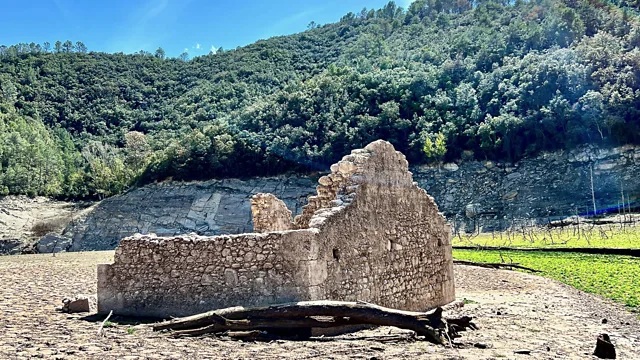
Nichola Daunton
If you were asked to name one thing about Nepal, chances are you’d pick Everest. The mountainous south Asian country is overshadowed by its highest peak, meaning many tourists think mountains are all Nepal has to offer. But they couldn’t be more wrong.
Nepal opened to foreign tourists in the 1950s, and geologist Toni Hagen was the first European to trek across Nepal, mapping the landscape for the United Nations.
“From the beginning, when we opened Nepal to foreigners, most of the foreigners from Toni Hagen onwards wrote about the mountains, so Nepal became a mountaineer’s destination,” explains Dr. Dhananjay Regmi, CEO of Nepal Tourism.
“And then Norgay and Hillary climbed Everest [in 1953], so it became a destination for climbing…so many people think that Nepal means Everest or the mountains. But Nepal has a lot more than mountains.”
It is its other regions, from the mid-hills to the lowland jungles that Nepal wants the world to see now. The country is inviting tourists to slow down and enjoy the rich abundance of nature that Nepal has to offer.
If you want to explore Nepal beyond the mountains, here are some of our top picks.
1. Chitwan National Park

Chitwan means ‘heart of the jungle’ and this region, situated in the foothills of the Himalayas, close to the border with India, is a haven for wildlife, including tigers, one-horned rhinos and crocodiles. This sub-tropical region is home to 544 species of bird and has a tiger breeding centre too, explains Dr. Regmi.
“This is the year that Nepal has doubled its tiger population. Nepal has put a lot of effort into the conservation of wild animals.
“And now if you go to the national parks of Nepal, which are in the lowland areas, the chances of seeing tigers is 90 per cent.”
2. Soak up the views at a Hill Station

If you want to take some stunning photos of the Himalayas, then you need to visit a hill station. Dotted among the mountains, these places offer some of the best panoramas of the surrounding peaks. Poonhill in Myagdi offers visitors some sweeping views of the Annapurna and Dhaulagiri mountain ranges. The station is 270 km west of Kathmandu and the hike here will take you two or three days.
If you’re planning to trek without a guide, you’ll need to get an ACAP Nepal Permit before you set off.
3. What can I see in Kathmandu?

“If you love heritage sites then Kathmandu is a great place to go,” says Dr. Regmi.
In Kathmandu Valley you’ll find three ancient cities: Bhaktapur, Kathmandu and Patan. The three cities are home to seven UNESCO World Heritage shrines and are full of temples, sculptures and exquisite art.
Thankfully for the Nepalis, the hippie trail of the 60’s and 70’s has long since dried up, and Nepal’s capital is now an eclectic mix of tradition and modernity, with ancient temples and religious processions colliding with tech and business.
From Boudhanath stupa – one of the largest stupas (a domed building containing Buddhist relics) in the world – to the Garden of Dreams, a 9 hectare botanical garden, if architecture is your thing, Kathmandu is the place for you.
4. Visit the third highest mountain in the world

It’s not all about Everest you know, Nepal is also home to Kanchenjunga.
“We have the third highest mountain in the world too, which has only 800 tourists going there in a year, whereas in Everest we have 70,000 people going,” says Dr. Dhananjay Regmi.
“We also have other mountains in the western part, and if you go there, you can enjoy much more nature and a very calm environment. You can really feel that you are in nature, whereas if you go to Everest, obviously since the number of the trekkers are very high, you never feel that you are very close to nature.”
On the border between Nepal and India, if you want to visit the 8,586 metre mountain you’ll need to join a trekking party. Kangchenjunga has five snow-capped peaks and is surrounded by rhododendrons and wild orchids, making it a beautiful place to visit. But beware, this is one for experienced trekkers only.
5. Where is the birthplace of Buddha?

“Another place to visit is Lumbini, which is the birthplace of Lord Buddha,” says Dr. Regmi.
“Nepal has not focused much on it before, simply because we didn’t have an airport there. But Nepal built a new airport and we are expecting that numbers will significantly increase.”
The third largest province in Nepal, Lord Buddha was born in the gardens of Lumbini in 623 BC and the gardens have been a place of pilgrimage for Buddhists ever since.
The Indian emperor Ashoka built commemorative pillars in the garden in the 3rd century and Nepal is now developing the site into a Buddhist pilgrimage centre.
Another place to visit in the region is Bardiya National Park, a protected wilderness that is home to a sal forest, as well as rare species like rhinos and elephants.
6. Can I go white-water rafting in Nepal?

Nepal has some of the best rivers in the world for white-water rafting. From deep gorges to fast-flowing rapids, there is a river for every level, from beginner to expert.
Popular spots include Karnali, Seti and Sunkoshi and you can even raft your way into Chitwan National Park too. Along your route you’ll see rare flora and fauna and maybe even some wild animals.
If you prefer kayaking, there’s a growing community for you to join in Nepal, just make sure to sign up with a local agent who will help you navigate Nepal’s wild waters.
Courtesy: euronews
The post Nepal: Journey beyond the mountains to the heart of the Himalayas appeared first on The Frontier Post.








